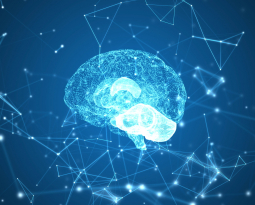
Vagus Baby! 3 Ways to Stimulate the Vagus Nerve
The Vagus Nerve
The Vagus Nerve, Cranial Nerve X, is the longest cranial nerve extending from the brainstem to the abdomen. Due to its long course, the Vagus Nerve is commonly referred to as the “Wandering Nerve.” It is involved in sensory and motor activity as well as parasympathetic functions.
The Vagus Nerve is an important cranial nerve of the nervous system to coordinate parasympathetic function. Parasympathetic output stimulates health, relaxation, and better function of vital organs.
What happens in Vagus, stays in Vagus… or does it?
The parasympathetic nervous system is commonly referred to as the “Rest and Digest” or “Feed and Breed” system. This system, unlike the sympathetic system for “Fight or Flight” is for relaxation of the mind and the body. When patients are in a parasympathetic state, they are less stressed out. With a reduction of stress is a better ability to adapt to changes within the environment.
The branchial motor projections of the Vagus Nerve provide motor output to the pharynx and the larynx. Innervation of pharyngeal muscles is for swallowing and ca be clinically tested with the gag reflex. Innervation of laryngeal muscles controls the vocal cords for speaking and singing.
The parasympathetic motor projections are descending pathways originating in the dorsal motor nucleus and project to the trunk via the cardiac branches, pulmonary branches, gastric branch, and the intestinal branch.
Vagus Nerve Functions
Due to all of the projections of the Vagus Nerve, it helps achieve the following functions:
• Relaxation of the body
• Modulation of respiratory function
• Decreased heart rate
• Motor output of the pharynx and larynx
• Communication between the brainstem and abdomen for digestive and gut functions
The Vagus Nerve communicates with the Nucleus Tractus Solitarius, which is the cardiorespiratory center of the central nervous system. For this reason, proper function of the Vagus Nerve is vital for proper respiratory and cardiovascular function. Compromised function of the Vagus Nerve can have a negative impact on your patient’s health and their ability to function optimally.
Compromised function of the Vagus Nerve can have a negative impact on your patient’s health and their ability to function optimally.
Another important function of the Vagus Nerve, in relation to posture, is digestion and gut function. Posture while eating affects how the enteric nervous system digests food (Hirota et al., 2002). Slouching can cause peristaltic waves to be irregular and may even lock food in one place of the digestive system, causing irritation (David, 1991). Alignment of the spine may be a precursor to experiencing biological and psychological fullness as well (David, 1991).
Stress affects digestion. Proper posture and parasympathetic output are important for gut and GI function.
Stimulation of the Vagus Nerve
Vagal Nerve stimulation is important for better health and function of your patients.
3 Ways to Stimulate the Vagus Nerve:
• Humming and singing to stimulate the vocal cords
• Chanting “OM” during meditation and mindfulness practices
• Breathing training to control slow, deep respiration
All of these options can easily be added to your brain based postural correction treatments for vagal stimulation. Take action with your patients to achieve superior clinical results. Help your patients achieve their health goals and make neuroplastic changes of the Posture System with Postural Neurology.

















